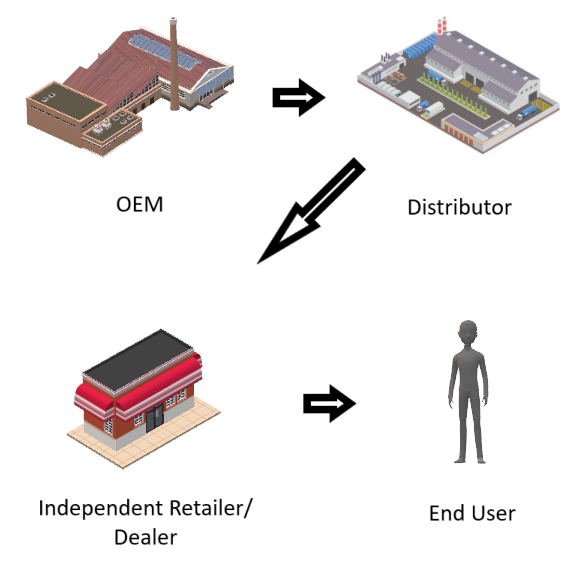Pros & Cons for Direct and Indirect Distribution
by Black Ink Team

For original equipment manufacturers (OEMs), there are various approaches that they can take when it comes to distribution. ‘Distribution’ in this sense means getting products from the factory floor to the end user – which is a lot more complicated than just picking something up and moving it from point A to B. There’s a lot that you must take into account such as liability concerns, transportation costs, and more. One method is direct distribution, which is where the manufacturer handles getting the product to the customer themselves. For equipment manufacturers using this strategy, it means setting up and managing proprietary distribution channels – which, depending on the size of their market and the scope of their business, can add considerable costs. Alternatively, manufacturers can choose to sell via indirect distribution, which means relying on third-party distribution networks consisting of wholesale distributors, independent retailers, and sales reps.
From a logistics management point-of-view, the indirect distribution method is far superior – in terms of saving your company from stress, sunken costs, etc. This is because when you outsource distribution activities to an outside party you give up having to manage dealer relationships, monitor inventory levels, and from having to do other complicated tasks. The benefits are plentiful, for example selling through a dealer network instead of directly can dramatically offset the effects of seasonality since products can be lined up to be sold months (or even years) in advance. Many independent retailers prefer to buy their stock from wholesale distributors rather than from OEMs, as distribution centers can radically streamline the ordering process. Think of how you go shopping – there are times when you find it more convenient to go to one big store that has many things, rather than multiple stores that only have one.

One drawback to indirect distribution is that it makes it harder for the manufacturer to glean customer information. This is where the difference between sell-in data and sell-through data becomes important to know. ‘Sell-in’ refers to patterns in the mix and volume of products you have sold to your distributors and/or dealers. ‘Sell-through’ refers to patterns in the mix and volume of products you have sold to end users. Product registrations – when filled out accurately – can grant OEMs sell-through visibility as they allow them to see when an end user buys a product.
Some technologies are making changes to how companies handle distribution. For instance, RFID tags and GPS transponders are enabling supply chain managers to see where incoming/outgoing orders are at all times. Industry 4.0 changes such as 3D-printing are leading to smart factories, which will lead to a higher capacity for rapid prototyping and an increased ability to meet individual customer demands – in other words, consumer durable goods are becoming more bespoke. Therefore, there will be a greater need for speed and accuracy in material handling, as orders will become more personalized. AI-controlled warehouses and distribution centers are here or at the least right around the corner, to help make up for the increased complexity.
Futuristically-speaking, we might one day see the equipment industry completely change, to where a piece of equipment doesn’t exist until a customer orders it to its exact specifications. Furthermore, that piece of equipment might not be built at one central location, such as in a factory, but rather it may be built exactly where the customer needs it. But until then OEMs will still need tools to handle the myriad complexities of selling products. For all their account-based marketing, customer information, and lead management needs, thankfully there is CRM.
